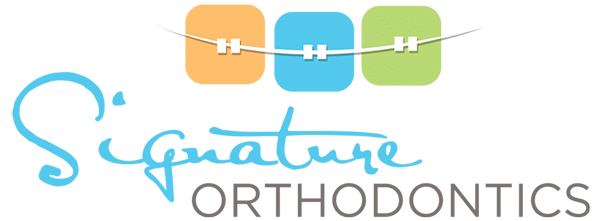Many of our patients have trouble deciding between Invisalign and braces, which is understandable. While both orthodontic treatments are effective, they work in very different ways! If one of the factors in your decision is which option is faster, there are a few things to consider.
Which Is Faster, Invisalign or Braces?
While people usually think of treatment time as how long you’ll need to wear braces or Invisalign, there’s another way to think about it: how much time you will spend in our office!
Many of our adult patients like the fact that Invisalign involves fewer office visits. We always enjoy seeing our patients in person, but we realize that having to adjust your work schedule every four weeks for orthodontic visits can be inconvenient. Traditional braces require more frequent visits to the dentist for tightening and adjustments; with Invisalign, you switch to the next set of aligners at home and check in with us every six weeks.
Another time-saving benefit of Invisalign is that you won't have to come in for emergency appointments if a bracket breaks. Invisalign is a fantastic solution for people with busy schedules because aligners don’t require repairs.
Getting back to the question of treatment time, every patient is different, so it’s hard to answer whether Invisalign or braces will be faster without seeing you for a consultation. Advances in Invisalign technology make the system comparable to braces in terms of timeline, but it’s also important to remember that Invisalign aligners only work when you wear them, while braces are affixed to your teeth, straightening them 24/7. Patients who have trouble wearing aligners consistently and regularly will have longer treatment times.
Invisalign vs. Braces: Other Factors to Consider
Speed shouldn’t be the only consideration when it comes to choosing Invisalign or braces. Here are some other important factors to keep in mind:
Appearance
The most common reason patients prefer Invisalign to traditional braces is because of their discreet appearance. Braces are noticeable and cannot be removed. Invisalign aligners are virtually invisible and can be removed when needed.
Cost
Traditional metal braces are usually less expensive than Invisalign. Most dental insurance plans that cover orthodontics will cover both options, but if you choose Invisalign, you may need to pay the difference between aligners and metal braces. This can be paid for with funds from your flexible spending account (FSA) or health savings account (HSA).
Results
Both Invisalign and traditional braces do an excellent job of straightening teeth—we wouldn't offer them at our practice if they didn't! However, there are times when braces are the best option. Traditional braces are still the treatment of choice for complex orthodontic cases.
Convenience
Many patients prefer the convenience of Invisalign over braces. Aligners can be removed, so you can eat whatever you like, continue to brush and floss your teeth as usual, and there are no orthodontic emergencies to worry about.
Braces vs. Invisalign: Which Option is Right for You?
If you’d like to schedule a consultation to learn more about how Invisalign and braces compare and which option is best for your unique needs, contact us today.

